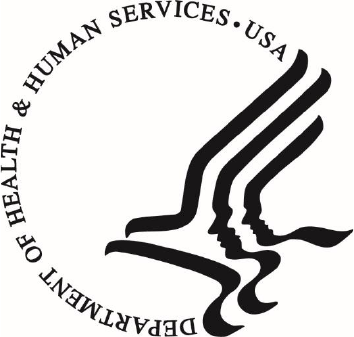
The U. S. Department of Health and Human Services
LANGUAGE ACCESS PLAN
2023

HHS
2023
1
Hello,
Approximately 68 million people in the United States speak a language
other than English at home, and of those, 8.2% speak English less than very
well and therefore would meet HHS’s definition of limited English
proficiency (LEP), as they do not speak English as their preferred language
and have a limited ability to read, write, speak, or understand English. Data
show there are higher rates of LEP in certain communities of color and among people with lower
incomes, and that there’s a lack of meaningful language access in this country, which can lead to
inequitable access to the programs and services we run at HHS. If healthcare providers can’t
communicate clearly with their patients, how can they establish a relationship of trust, and how
can patients appreciate the severity of what’s happening to them, or understand what’s needed to
make them better?
Title VI of the Civil Rights Act of 1964, Section 504 of the Rehabilitation Act of 1973, Title II
of the Americans with Disabilities Act, and Section 1557 of the Affordable Care Act prohibit
entities receiving federal financial assistance from discrimination on the basis of, among other
things, race, color, national origin, and disability. This means covered entities must provide an
equal opportunity to participate in and benefit from programs; communications with individuals
with disabilities must be as effective as with others; and reasonable steps must be taken to
provide meaningful access to people with LEP. Obligations to take steps to provide meaningful
access to individuals with LEP also apply to subrecipients of federal financial assistance, who
must similarly comply with all applicable civil rights laws.
The Biden-Harris Administration and Secretary Becerra are deeply committed to eliminating
barriers that people face in obtaining information, services, and benefits from HHS federally
conducted and assisted programs. As a Mexican American and a fifth-generation Arizonan,
language access is not just a professional commitment, but a personal one. Thus, I am proud to
announce that the HHS Language Access Steering Committee has updated the Department’s
Language Access Plan for the first time since 2013. This plan will aid the Department’s
Operating and Staff Divisions in providing equitable access to the wide array of programs and
activities funded and administered by HHS. May it prove to be a useful tool in overcoming
barriers and advancing equity for all.
Sincerely,
Melanie Fontes Rainer, Director
Office for Civil Rights

HHS
2023
2
TABLE OF CONTENTS
INTRODUCTION ....................................................................................................................... 3
LANGUAGE ACCESS POLICY AND IMPLEMENTATION ................................................. 5
APPENDIX A: HHS LANGUAGE ACCESS PLAN .............................................................. 10
ELEMENTS AND ACTION STEPS ........................................................................................ 11
ELEMENT 1: Assessment: Needs and Capacity ...................................................................... 12
ELEMENT 2: Interpretation Language Assistance Services .................................................... 13
ELEMENT 3: Written Translations .......................................................................................... 16
ELEMENT 4: Policies, Procedures, and Practices ................................................................... 19
ELEMENT 5: Notification of the Availability of Language Assistance at No Cost ................ 20
ELEMENT 6: Staff Training ..................................................................................................... 21
ELEMENT 7: Assessment & Accountability: Access, Quality, Resources, Reporting ........... 22
ELEMENT 8: Consultations with Health Care and Human Services Partners ......................... 24
ELEMENT 9: Digital Information ............................................................................................ 25
ELEMENT 10: Grant Assurance and Compliance by Recipients of HHS Funding ................. 28
APPENDIX B: Definitions ........................................................................................................ 31
APPENDIX C: Language Access Related Resources ............................................................... 35

HHS
2023
3
INTRODUCTION
Today, the U.S. Department of Health and Human Services (HHS) joins over 35 federal agencies
across the administration in issuing a revamped Language Access Plan. The 2023 Language
Access Plan will ensure greater access to the life-saving services that HHS provides for people
with Limited English Proficiency (LEP).
1
This Plan represents the culmination of years of
dedication by HHS and its leaders. The Office for Civil Rights (OCR) worked closely with
representatives from across the Department to draft this important plan and it would not be
possible without the tireless efforts of the Department-wide Language Access Steering
Committee.
A lack of meaningful language access can lead to inequitable access to HHS programs and the
services the agency funds. The U.S. Census Bureau’s 2021 American Community Survey
indicates that 21.5 percent of people in the United States speak a language other than English at
home. Of those, 8.2 percent speak English less than very well and therefore meet the definition
of limited English proficient.
2
HHS has long recognized and is meaningfully seeking to reduce
and eventually eliminate racial and ethnic disparities in health and health care.
3
The disparities
for persons with LEP prompted the Agency for Healthcare Research and Quality to fund
development of Improving Patient Safety Systems for Patients With Limited English: A Guide
For Hospitals.
4
The Guide notes that research indicates that “adverse events affect patients with
LEP more frequently, are often caused by communication problems, and are more likely to result
in serious harm compared to those that affect English-speaking patients.”
5
Providing language
access decreases barriers to equal access to HHS programs and the services the agency funds.
Since taking office, President Joseph R. Biden has issued four Executive Orders that support the
importance of ensuring language assistance and meaningful access: EO 13985, Advancing Racial
Equity and Support for Underserved Communities Through the Federal Government;
6
1
This plan is primarily focused on meaningful access for individuals with LEP, however, the Department recognizes
the requirements for effective communication with persons with disabilities under the Americans with Disabilities
Act, Section 504 of the Rehabilitation Act, and Section 1557 of the Affordable Care Act. While this plan does not
primarily focus on effective communication with individuals with disability, many aspects of this plan also apply to
ensuring that agencies are communicating effectively with persons with disabilities and, therefore, the plan does
make reference to some, but certainly not all, effective communication requirements.
2
U.S. Census Bureau 2021 American Community Survey, Why We Ask Questions About Languages Spoken At
Home (Nov. 14, 2022), https://www.census.gov/acs/www/about/why-we-ask-each-question/language/.
3
See, e.g., U.S. Dep’t Health and Human Servs., HHS Action Plan to Reduce Racial and Ethnic Health Disparities:
Implementation Progress Report 2011-2014,
HHS Action Plan to Reduce Racial and Ethnic Health Disparities:
Implementation Progress Report 2011-2014 | ASPE.
4
The Disparities Solution Center (Sept. 2012),
https://www.ahrq.gov/sites/default/files/publications/files/lepguide.pdf.
5
Id. at iii. See also EO 14031, 86 Fed. Reg. at 29675, Sec. 1 (noting the high LEP rates among the nation’s growing
Asian American (AA) Native Hawaiian and Pacific Islander (NHPI) communities, and that “[l]inguistic isolation
and lack of access to language-assistance services continue to lock many AA and NHPI individuals out of
opportunity.”).
6
EO 13985 requires each agency to “produce a plan for addressing any potential barriers that underserved
communities and individuals may face to enrollment in and access to benefits and services in Federal programs.”

HHS
2023
4
EO 13995, Ensuring an Equitable Pandemic Response and Recovery;
7
EO 14031, Advancing
Equity, Justice, and Opportunity for Asian Americans, Native Hawaiians, and Pacific Islanders;
8
and EO 14091, Further Advancing Racial Equity and Support for Underserved Communities
Through the Federal Government Further Advancing Racial Equity and Support for Underserved
Communities Through the Federal Government.
9
In April of 2022, pursuant to EO 13985, the Department developed the HHS Equity Action Plan,
which identifies language access objectives, goals, and requirements for the Department beyond
actions required by EO 13166
10
and Section 1557 of the Affordable Care Act (Section 1557).
11
The first section of the Equity Action Plan is entitled “Nondiscrimination in HHS: Civil Rights
Protections and Language Access,” and focuses on how HHS can remove barriers to equitable
outcomes in HHS programs and activities. The Equity Action Plan requires the Department to
“work to restore and strengthen its cross-department Language Access Plan,” and identifies a
number of specific language access goals, processes, policies, and responsibilities. The Director
of the Office for Civil Rights (OCR) is charged with establishing a method for monitoring and
reporting progress made by the Department to implement the language access requirements in
the Equity Action Plan.
12
To support this Department-wide effort, on October 6, 2022, Deputy Secretary Andrea J. Palm
issued a memo to all the leaders within HHS entitled, Secretary Becerra’s Commitment to
Provide Language assistance services Under Executive Orders 13166, 13985, and 14031. The
memo affirms that OCR’s Director is in charge of strengthening and leading the Department’s
7
EO 13995 established the COVID-19 Health Equity Task Force, which is directed to make recommendations for
agencies to provide effective, culturally aligned communication, messaging, and outreach to underserved
communities.
8
EO 14031 Directs Secretary Becerra to co-chair the White House Initiative on Asian American, Native Hawaiians,
and Pacific Islanders (WHIAANHPI), a federal interagency working group directed to “advance equity, justice, and
opportunity for AA and NHPI communities by coordinating Federal interagency policymaking and program
development efforts to eliminate barriers to equity, justice, and opportunity faced by AA and NHPI communities.”
Language access is one of three key issues that impact the health and well-being of AA and NHPI communities.
9
EO 14091 requires agencies to “consider opportunities to . . . improve accessibility for people with disabilities and
improve language assistance services to ensure that all communities can engage with agencies’ respective civil
rights offices, including by fully implementing Executive Order 13166 of August 11, 2000 (Improving Access to
Services for Persons with Limited English Proficiency).”
10
EO 13166 directs federal agencies to improve access to federally funded programs and activities by persons with
limited English proficiency, and to implement a system by which limited English proficient persons can
meaningfully access the agency’s services. Executive Order (EO) 13166,
Improving Access to Services for Persons
Wi
th Limited English Proficiency (Dec. 12, 2000).
11
Section 1557 of the Affordable Care Act provides that “an individual shall not, on the grounds prohibited under
Title VI of the Civil Rights Act of 1964 (42 U.S.C. 2000d et seq.) [race, color, national origin (i.e., LEP)].” 42
U.S.C. § 18116 (a).
12
See Equity Action Plan, 3 “(Since the release of EO 13985 on January 20, 2021, HHS has focused on taking steps
to continually advance equity, which is a top priority for President Biden and HHS Secretary Becerra.”), 5 (“Under
Secretary Becerra’s leadership, HHS has prioritized restoring efforts to provide language assistance services
appropriate to their respective programs.”).

HHS
2023
5
language access program and for reporting progress to the Secretary.
13
On October 11, 2022, HHS relaunched the Language Access Steering Committee, which is
tasked with incorporating the language access deliverables of the Equity Action Plan into an
updated HHS Language Access Plan, and to lead Departmental efforts to fully implement this
new HHS Language Access Plan.
14
The Deputy Secretary and OCR Director determined that
the Language Access Steering Committee must function at full strength to further the President’s
and the Secretary’s language access goals for the Department.
15
The Deputy Secretary
specifically requested the heads of operating divisions (OpDivs) and staff divisions (StaffDivs)
to appoint a GS-14 or GS-15 level representative to the Language Access Steering Committee
for the purpose of effectuating HHS implementation of language access obligations under EO
13166, EO 13985, EO 14031, and the Equity Action Plan issued in April of 2022.
16
During the first meeting, the Language Access Steering Committee discussed the importance of
updating the Department’s Language Access Plan, which was published in 2013. Based on these
guidelines, HHS therefore issues the attached updated Language Access Plan.
17
LANGUAGE ACCESS POLICY AND IMPLEMENTATION
a. Goal
In furtherance of HHS’s efforts to advance equity through identifying and addressing barriers
to equal opportunity that underserved communities may face due to government policies and
programs, each HHS agency
18
shall ensure access to timely, quality language assistance
services (LAS) for individuals with limited English proficiency (LEP).
19
b. Purpose and Authority
HHS enforces Title VI of the Civil Rights Act of 1964 (Title VI)
20
and Section 1557.
21
13
Mem. from Dep. Sec. Andrea Palm to Heads of Operating and Staff Divisions (Oct. 6, 2022) (on file with OCR);
see also Press Release, HHS Takes Action to Break Language Barriers | HHS.gov (Oct. 6, 2022).
14
Mem. from OCR Dir. Melanie Fontes Rainer to Heads of Operating and Staff Divisions (Oct. 7, 2022) (on file
with OCR).
15
Id.
16
Palm Mem., 1. The Language Access Steering Committee has five subcommittees for its members to serve on:
Accountability, Oral Interpretation, Information Technology, Written Translation, and Resources for HHS
Recipients.
17
See Appendix A.
18
Terms that are bolded and underlined are included in the glossary in Appendix B.
19
This Language Access Plan intends only to improve the internal management of HHS agencies and does not
create any right or benefit, substantive or procedural, enforceable at law or equity by a party against the United
States, its agencies, its officers or employees, or any person.
20
Title VI of the Civil Rights Act of 1964, as amended (42 USC § 2000d), prohibits discrimination on the basis of
race, color, or national origin (including LEP) in programs and activities receiving federal financial assistance.
See 45 C.F.R. § 80.
21
Section 1557 of the Patient Protection and Affordable Care Act (42 U.S.C. § 18116) prohibits discrimination on
the grounds of race, color, national origin (including LEP), sex, age, or disability in any health program or activity
that receives Federal financial assistance from HHS or is administered by HHS.

HHS
2023
6
These laws prohibit covered entities, including entities receiving federal financial assistance
and state and local government entities, from discrimination on the basis of, among other
things, race, color, national origin, and disability. Accordingly, reasonable steps must be
taken to provide meaningful access to people with LEP.
22
The Plain Writing Act of 2010 is a
law which requires that federal agencies use clear government communication that the public
can understand and use. Executive Orders 12866, 12988, and 13563 emphasize the need for
plain language.
This plan is designed to ensure meaningful access for individuals with LEP to programs and
activities administered and funded by HHS in accordance with Title VI and Section 1557,
Executive Orders 13166, 13985, 13995, 14031, and 14091, and the HHS Equity Action Plan
issued in April 2022. Collectively, these authorities set overarching goals for HHS to
improve access to its programs and activities for persons with LEP and ensure that entities
funded by HHS also take reasonable steps to provide meaningful access for persons with
LEP.
23
While this plan is primarily intended to promote meaningful access to HHS components’
programs and activities for individuals with LEP, many aspects of this plan also apply to
ensuring that agencies are communicating effectively with persons with disabilities,
including persons who rely on sign language to communicate.
24
Section 504 requires the
Department to take appropriate steps to ensure that it communicates effectively with people
with disabilities, including people who rely on sign language to communicate. This may
include people who are deaf or hard of hearing, blind or low vision, or have speech-related or
other disabilities.
25
This plan does not contain an exhaustive list of requirements to comply
with Section 504 and other disability rights laws, but the Department and its components
must comply the requirements for effective communication with persons with disabilities
under the Americans with Disabilities Act,
26
Section 504 of the Rehabilitation Act,
27
and
Section 1557 of the Affordable Care Act. The Department and its components must also
22
Specifically, these laws require reasonable steps must be taken to provide meaningful access to LEP individuals
(Section 1557; Guidance to Federal Financial Assistance Recipients Regarding Title VI Prohibition Against
National Origin Discrimination Affecting Limited English Proficient Persons, 68 Fed. Reg. 47311, 47320 (Aug. 8,
2003)), and individuals must be provided with an equal opportunity to participate in and benefit from programs
(Title VI, Section 1557).
23
Under Title VI of the Civil Rights Act of 1964 and implementing regulation, failure of a recipient of federal
financial assistance to take reasonable steps to provide meaningful access for persons with LEP to covered programs
and activities could violate Title VI.
24
There are different legal standards for communicating with individuals with LEP and those with disabilities, i.e.,
“effective communication " and "meaningful access," so we are keeping them distinct throughout.
25
See 45 C.F.R. § 85.51.
26
Title II of the Americans with Disabilities Act of 1990 (42 U.S.C. §§ 12131-12134), as amended by the ADA
Amendments Act of 2008 (ADA Amendments Act) (Pub. L. 110-325, 122 Stat. 3553 (2008)), prohibits
discrimination on the basis of disability by public entities. The ADA regulations generally designate HHS as the
agency with responsibility for investigating complaints of discrimination in “programs, services, and regulatory
activities relating to the provision of health care and social services.” 28 C.F.R. § 35.190(b)(3).
27
Section 504 of the Rehabilitation Act of 1973, as amended (29 USC § 794), prohibits discrimination against
otherwise qualified individuals on the basis of disability in programs and activities receiving financial assistance
from HHS (45 C.F.R. § 84), and programs or activities conducted by HHS (45 C.F.R. § 85).

HHS
2023
7
comply with Section 508 of the Rehabilitation Act of 1973 (Section 508),
28
which requires
federal agencies to ensure that their electronic and information technology, including
websites, electronic documents, and software applications, are accessible to individuals
with disabilities.
c. Policy Statement
The policy of the Department is to provide individuals with LEP meaningful access to HHS
conducted and funded programs and activities thereby removing barriers to achieving
equitable delivery of HHS conducted and funded programs and activities, which will
ultimately contribute to improved health outcomes and reduced health disparities for
underserved communities identified in EO 13985.
d. Plan Development and Implementation
The Language Access Steering Committee has three primary responsibilities: 1) update the
Department’s language access policies, procedures, and strategy; 2) develop and maintain an
accurate record of the Department’s efforts to regularly assess and take necessary steps to
improve and ensure the quality and accuracy of language assistance services provided to
individuals with LEP by programs and activities funded and administered by HHS; and 3)
annually report to the Secretary on progress made by each HHS division toward
implementing this Language Access Plan and proposing recommendations for improving the
Department’s ability to fully implement this Language Access Plan.
e. Update HHS Language Access Plan
The Language Access Steering Committee will work with HHS agencies to develop and
track implementation methods for measuring improvements in language access in individual
programs and activities and take steps to ensure that information, including qualitative and
quantitative, as well as intersectional and disaggregated data, is collected in a manner that
increases comparability, accuracy, and consistency across programs and activities. The
Language Access Steering Committee will compile data for an annual report from the OCR
Director to the Secretary that accounts for progress made by HHS to fully implement the
revised Language Access Plan and make recommendations to the Secretary for improving
language assistance services available to LEP customers of HHS programs and activities.
f. Develop Methods to Record HHS Progress
The Language Access Steering Committee will annually provide all agencies with a data call
or survey from which the annual report and recommendations can be developed. The data
call or survey will request information essential for measuring progress made to implement
action steps under each element of the Language Access Plan, including disaggregated and
28
Section 508 of the Rehabilitation Act of 1973 (29 USC § 794(d)) prohibits discrimination on the basis of disability
in information and communication technology as they relate to programs and activities conducted by HHS.

HHS
2023
8
intersectional demographic data. It will also request information about each agency’s
expected budget request for providing and/or funding language assistance services in coming
years. In subsequent years, the Language Access Steering Committee will issue the data call
by March 31 so that agencies have time to include budget justifications to the Assistant
Secretary for Financial Resources (ASFR).
g. Draft Annual Progress Report and Recommendations
On an annual basis, the Language Access Steering Committee will draft and submit the
Annual Language Access Progress Report into clearance so that the Secretary will receive
the report with recommendations before end of fiscal year, and issue it to the public soon
thereafter. To the extent possible and practical, the report will disseminate data to help HHS
components facilitate organization-wide learning and coordination, collaboration on high
impact outreach, and/or developing cross-cutting audience appropriate and culturally
competent responsive messaging to mutual customer communities.
h. Short- and Long-term Benchmarks
To ensure HHS makes progress in the four major areas identified by the 2022 Equity Action
Plan, this Language Access Plan incorporates short term action steps designed to significantly
enhance HHS’s capacity to provide: 1) webpages in languages other than English; 2)
telephonic and video or virtual interpreting services; 3) program and benefit information in
languages other than English; and 4) federal funding for language assistance services.
Benchmarks for measuring progress that were issued in the 2022 Equity Action Plan are
illustrated below.
29
29
Though these benchmarks specifically address language access barriers for individuals with LEP, effective
communication and accessibility obligations for individuals with disabilities may also apply. The Department and its
components must take appropriate steps to ensure that its communications with individuals with disabilities are as
effective as its communications with others.

HHS
2023
9
Chart of Benchmarks Established in HHS Equity Action Plan Issued April 2022:
Barriers to be
addressed
Medium term indicators
(2 to 4 years)
Long term indicators
(5 to 8 years)
These pre-established goals and benchmarks are incorporated into the attached Language Access
Plan as follows: Element 2, Interpretation Language Assistance Services, includes procedures for
providing effective telephonic interpreting services. Element 3, Written Translations, provides
an action plan for developing program, activities, and benefit information in various spoken
languages. In addition, pursuant to Element 9, Digital Information, guidance, policies,
procedures, and other tools will be developed so that components can produce and post in-
language webpages in an efficient and consistent manner. Finally, Element 10, Grant Assurance
and Compliance by Recipients of Federal Funding, is designed to better focus resources on
helping entities funded by HHS to provide effective language assistance services.
30
NOTE: Although the benchmark indicators of the Equity Action Plan range from two to eight
years, the Language Access Steering Committee will promote quicker implementation of
Language Access Plan action steps as resources and circumstances permit. The 2023 Language
Access Plan also includes additional details about the goals and benchmarks.
30
See Appendix A for further detail.
Access to in-language
content through
webpages, listserv
announcements, &
public outreach material
◆Establish
website
accessibility
guidance
◆ Agencies will post in-language webpages & annual
add pages in frequently encountered languages
◆ Agencies’ websites will link to in-language
program information
◆ LEP visitors will find more online material in their
language and information on how to obtain LAS
Telephonic
interpreter
services
◆Establish
procedures for
providing
telephonic
interpreter
services
◆ Every agency will have Help Lines supported by
telephonic interpreters
◆ LEP callers to Help Lines will successfully reach and
obtain services from the desired office
Program and
benefit
information in
other
languages
◆Establish action
plan for in language
program & benefit
information
◆ Every agency will translate and publish vital
documents in non-English languages
◆ Every agency regularly updates already
translated in-language program information
◆ Every agency will develop a mechanism for
receiving document translation request
Federal
funding for
recipients of
HHS funds to
provide LAS
◆Establish how LAS
funding can be
distributed
◆ Establish goals for
funding LAS
◆ Grant programs will aim to provide funding to
help recipients provide language access services
◆ LEP visitors to HHS-funded/conducted programs
will receive language access services at no cost

HHS
2023
10
APPENDIX A: HHS LANGUAGE ACCESS PLAN
Within six months of the issuance of this updated Language Access Plan,
31
with input from
health care and human services partners,
32
HHS divisions shall develop and implement
agency-specific language access plans and policies that incorporate and identify action steps to
implement all ten elements of this Language Access Plan. Agencies shall submit their plans to
the Language Access Steering Committee Chair for review and approval. The Language Access
Steering Committee Chair will report annually to the Secretary on progress made by each HHS
division to implement all elements of this plan. Office for Civil Rights (OCR) will provide
technical assistance to agencies needing help developing their strategies for furthering HHS’s
overall language access program, including any updates needed in the Language Access Plans.
This Department-wide Language Access Plan will serve as a model for agencies’ Language
Access Plans. It addresses the language access goals, policies, and requirements established in
EO 13166, EO 13985, EO 13995, EO 14031, EO 14091, Title VI, Section 1557, and the 2022
HHS Equity Action Plan. Each of the ten (10) elements contained in the 2013 Language Access
Plan were analyzed and updated as necessary to respond to discovered LEP service weaknesses,
changes in technology, and priorities of the Administration. For example, in alignment with the
HHS Equity Action Plan and in consideration of recent developments including lessons learned
during the COVID-19 pandemic, the updated Language Access Plan includes a new focus on
website and other electronic means of communication, including video or virtual interpreting
when appropriate, as well as increasing language access to HHS programs and activities and
benefits information, and specific funding for language assistance. The 10 elements contained in
this updated plan establish practical goals, policies, and action steps for HHS agencies to
improve meaningful language access to their programs and activities as well as the programs and
activities they fund. The elements also provide recommendations to help HHS agencies improve
their effective communication with individuals with disabilities.
33
While HHS agencies have some flexibility in their methods, they must make progress
implementing the requirements and relevant procedures prescribed by this plan within the
provided timelines. For example, the action steps set forth in each element must be implemented
in each agency, and their programs and activities. HHS agencies have flexibility in how these
steps are implemented but must demonstrate and report progress each year. Moreover, all
agencies must incorporate their language assistance goals, including outreach to health care and
human services partners, in their annual budget justifications to enhance their capacity for
serving persons with LEP and the capacity of those they fund.
31
While some acronyms are spelled out here for readability, other acronyms and abbreviations used herein are
spelled out in the Introduction and Language Access Policy and Implementation sections of the document entitled
HHS 2023 Language Access Plan, which also includes citations to authorities.
32
Terms that are bolded and underlined are included in the glossary in Appendix B. The term “agency” means all
Operational Divisions and Staff Divisions. See Appendix B for further detail.
33
The Department is obligated to take appropriate steps to ensure effective communication with individuals with
disabilities under Federal nondiscrimination laws, including Section 504 of the Rehabilitation Act and Section 1557
of the Affordable Care Act. This Language Access Plan includes some recommendations to help advance effective
communication, but does not cover every effective communication obligation required by law.

HHS
2023
11
Agencies shall designate an office or official responsible for implementing each of the elements
below. Agencies can determine whether it is appropriate for the elements to be implemented by
the same office or official responsible for implementing another element. Agencies will provide
timely update updates to the Language Access Steering Committee of changes to the designated
office or official, including contact information.
Whenever possible and appropriate, the actions in this plan should be implemented in
conjunction with other agency initiatives to increase access to health care and services, improve
health quality, and reduce health and healthcare disparities. The 10 elements of the Language
Access Plan should be implemented holistically and in a complementary manner. To the extent
practicable, action steps should occur in tandem and best practices should be shared widely. For
questions, concerns, and support, please contact Langu[email protected] or call
202.969.3877.
ELEMENTS AND ACTION STEPS
This Language Access Plan represents the Department’s language access policy and strategy for
improving access for persons with LEP to programs and activities funded and administered by
HHS. This plan identifies specific steps and timelines to which HHS agencies must adhere to
ensure full implementation of the Department’s policy at the program level.
ELEMENT 1: Assessment: Needs and Capacity
ELEMENT 2: Interpretation Language Assistance Services
ELEMENT 3: Written Translations
ELEMENT 4: Policies Procedures, and Practices
ELEMENT 5: Notification of the Availability of Language Assistance at No Cost
ELEMENT 6: Staff Training
ELEMENT 7: Assessment & Accountability: Access, Quality, Resources, Reporting
ELEMENT 8: Consultation with Health Care and Human Services Partners
ELEMENT 9: Digital Information
ELEMENT 10: Grant Assurance and Compliance by Recipients of HHS Funding

HHS
2023
12
ELEMENT 1: Assessment: Needs and Capacity
In March of each year, each HHS agency will assess the extent that language assistance or in-
language material was requested and/or accessed or otherwise needed by their customers,
including beneficiaries, and/or other health care and human services partners, and develop a
budget request to meet anticipated language assistance needs for the coming year.
Description:
HHS agencies must, on an ongoing basis, assess the language assistance needs of their current
and potential customers to inform policy, processes, and budgeting necessary to increase
awareness of and implement language assistance services that increase access to their respective
programs, activities, and services for persons with LEP. This assessment should include 1.)
identifying the non-English languages, including American Sign Language (ASL) or other sign
languages, spoken by the population likely to be accessing or otherwise in need of and eligible
for the agency’s services, and 2.) the barriers – including resource barriers – that hinder
provision of effective interpretation and written communication with individuals with LEP.
Action Steps:
a. Each year, the designated office or official responsible for the annual assessment described in
this element must participate in at least one listening session, hosted by a particular agency or
HHS as a whole, to learn about challenges and opportunities for improvement in the agency’s
language access efforts, and consult subject matter experts to determine whether the agency’s
current language access program is effective and complies with Section 1557, as well as this
Language Access Plan.
b. The designated office or official must regularly participate on at least one inter- and/or intra-
agency language access working group to identify methods for improving agency proficiency
in providing language assistance services, such as hiring and equitably supporting qualified
bilingual and multilingual staff, and staff proficient in ASL, to provide direct “in-
language” communication and also ensuring the availability and effective use of contract
interpretation and translation services.
c. The designated office or official must take specific steps to develop or amend policies or
practices that ensure the agency’s language assistance services are adequate to meet customer
needs and advise agency officials on updating the agency language access plan as needed.
Agency Language Access Plans should be tailored in a way that makes sense to the agency
and the communities they serve. OCR welcomes additional measures undertaken by
agencies to serve persons with LEP and encourages agencies to include such measures in
their Language Access Plans so that best practices may be shared throughout HHS.

HHS
2023
13
HHS staff can determine whether a person needs language assistance in several ways:
• Voluntary self-identification by the individual with LEP or their companion;
• Affirmative inquiry regarding the primary language of the individual if they have
self-identified as needing language assistance services;
• Engagement by a qualified multilingual staff or qualified interpreter to verify an
individual’s primary language; or
• Use of an “I Speak” language identification card or poster;
• Identification of language preference when conducting population health surveillance
assessments;
• Inclusion of multilingual disease investigations;
• Use of state demographic mapping tools that include language preference and
disability for population prioritization.
HHS staff should not make assumptions about an individual’s primary language based on race,
color, national origin, or disability status. Individuals who are deaf or hard of hearing may not
communicate using ASL and may have limited proficiency in written and spoken English. They
may require a different auxiliary aid or service, such as support in a sign language from another
region or country or the procurement of a Deaf or Certified Deaf interpreter.
Additional considerations when identifying language include asking about the individual’s
region, municipality, village, or specific community, to ensure the correct identification of
language.
ELEMENT 2: Interpretation Language Assistance Services
Each HHS agency will take steps to provide appropriate interpretation language assistance
services (e.g., face-to-face, virtual (videos/webinars), and/or telephone encounters), free of
charge, that address the needs identified in Element 1. Each HHS agency will establish a point
of contact for individuals with LEP, such as an office, official, e-mail address, or phone number
to access this service.
Description:
Interpretation language assistance services are essential to ensure meaningful access to and an
equal opportunity to participate fully in the services, activities, programs, or other benefits
administered or funded by HHS agencies. Agencies must ensure that all interpreters they use are
qualified to provide the service and understand and apply interpreter ethics and client
confidentiality needs, especially because extensive research showing that lack of qualified
interpreting can have negative health consequences and increase contribute to health disparities.
The definition of a qualified interpreter is in Appendix B.
People with disabilities are entitled to appropriate auxiliary aids and services where necessary
to afford them an equal opportunity to benefit from HHS’s programs and activities. Auxiliary

HHS
2023
14
aids and services include, but are not limited to, qualified sign language interpreters on-site or
through video remote interpreting (VRI) services.
Language assistance may be provided through a variety of means, including qualified bilingual
and multilingual staff, and qualified interpreters providing in-person, telephonic, remote voice,
and video or any other type of interpreting. However, the Agency should not enlist children of
the individual for language assistance, and family or community members should only be used in
exceptional circumstances or when the person with LEP requests their language assistance. The
agency may not use an adult accompanying a person with a disability to interpret for them unless
they request the adult to interpret, the adult agrees, and reliance on the adult is appropriate. The
agency may not use a child accompanying a person with a disability to interpret except in an
emergency involving an imminent threat to safety or welfare where no other interpreter is
available. The agency shall not require a person with a disability to bring another person to
interpret for them. It is also imperative that the public knows that the agency will provide
interpreting services, free of charge.
Although appropriateness of an interpreter will vary by performance need, context, and setting,
generally, the interpreter should have subject matter competence in the topic(s) that will be
interpreted by demonstrating relevant educational background or professional experience in
those topics. For example, in a health care setting, agencies should engage an interpreter with
subject matter expertise in health and medical terminology. Medical billing and insurance
competencies may also be needed, depending on the context. Qualified interpreters are also
needed to ensure culturally appropriate and accurate interpreting. Notably, interpreters do not
have to be certified to be qualified, as not all languages have certification available.
A single point of contact for each HHS agency, such as an office or official, should develop
procedures for the agency to provide interpretation language assistance services and develop or
otherwise provide staff training to ensure all employees with public contact can provide
interpretation language assistance services as needed and in a timely manner.
Action Steps:
a. Within 180 days of issuance of this Language Access Plan, designate an office or official
responsible for establishing agency-wide procedures for providing interpreting services in a
manner that ensures timely communication between persons with LEP and HHS divisions
people with disabilities and HHS divisions. Procedures must address the various methods for
providing interpreter services, including procedures that ensure provision of effective remote
voice and video interpreter services.
b. Identify agency points of contact (POC) who are responsible for developing and
administering a remote voice and video interpreting program for each public-facing division
that ensures individuals with LEP are aware that HHS will provide interpreter services at no
cost and provide guidance on how to obtain the agency’s interpreter services, whenever
available. Such programs should account for the fact that the rise in integrated voice prompt
(IVP) systems has made it more difficult for individuals with LEP to get through various

HHS
2023
15
“phone trees” to get to an interpreter. As requiring responses to automated prompts to obtain
in-language assistance may prevent meaningful access, other options to access language
service more directly should be explored.
c. Agency POCs must assess their agency’s remote voice and video interpreting program,
consult with subject matter experts, make recommendations for improving the effectiveness
of the program, and provide a budget justification for actions that improve the program.
d. Agency POCs must develop methods and mechanisms for ensuring LEP communities are
aware that HHS will provide them with interpretation services at no cost and provide
information on how to obtain interpreting services. Methods include, but are not limited to,
the convening of listening sessions with health care and human services partners, surveys and
focus groups with LEP communities, and partnerships with non-profit organizations engaged
with LEP communities. Each year after, POCs must advise agency heads whether additional
outreach is needed.
e. Agency POCs must develop methods for tracking and reporting the number of requests for
interpretation services, the type of interpretation requested, the languages requested, and the
response time in which interpretation was provided. This also includes, but is not limited to
number of cases, matters, or outreach initiatives where language assistance was provided, the
primary language(s) requested or provided, the type of language assistance services provided,
or the cost of any language assistance services provided.
f. Each fiscal year, submit a budget justification for message dissemination to raise awareness
of available interpretation services.
g. Devise criteria for the assessing of bilingual staff or sign language interpreting staff for their
ability to provide interpretation services and ensure such employees are compensated
appropriately if they are called to provide interpretation services. Only staff who have been
assessed to have advanced language proficiency (according to HHS’s definition of
bilingual/multilingual staff) may communicate with persons with LEP or people with
disabilities who require sign language interpretation. Agencies will also consider criteria for
giving points in hiring decisions for bi- and multi-lingual employment candidates. Extensive
reliance on staff volunteers in lieu of utilizing professional interpreters is discouraged.
h. Consider maintaining a list of qualified bilingual and multilingual staff capable of providing
competent interpretation services that identifies contact information for the employee and the
language(s) in which they are competent to interpret. Devise a plan for how staff will be
trained to respond to language assistance services requests and who may call upon staff to
perform language access services language assistance services
i. Establish a list of all contacts and other resources available to the agency and qualified in
providing on-site interpreting (OSI), over-the-phone interpreting (OPI), and VRI to LEP
individuals and people with disabilities who require sign language interpretation seeking
information on or access to agency programs and activities.

HHS
2023
16
j. Develop a mechanism for monitoring and evaluating interpretation services.
k. Agencies that directly serve the public or fund programs and activities that serve the public
will establish help lines that are supported by OPI and VRI. At minimum, the help lines will
quickly connect callers who speak the 15 most commonly spoken languages in the relevant
state(s) (according to the most recent relevant data from the U.S. Census Bureau) to
telephonic or video interpreters. Based on community and individual needs, more languages
may be necessary and should also be included.
l. Agency POCs will serve on at least one inter- and/or intra-agency working group to learn and
share effective practices for enhancing interpretation language assistance and make
recommendations to their respective agency head for improving their interpretation language
assistance program.
m. Agencies should consider including provisions for ensuring that interpretation services are
accessible to individuals with disabilities, including those who are deaf or hard of hearing or
who have other communication-related disabilities. This may include providing sign
language interpreting, captioning, or additional accessible communication support. Some
examples of common visual communication modes are found in the following source: ADA
Business Brief: Communicating with People Who Are Deaf or Hard of Hearing in Hospital
Settings.
ELEMENT 3: Written Translations
Each HHS agency will identify, translate, and make accessible in various formats, including
print, online, and electronic media, vital documents, including important consumer/patient
information, in an accessible format, in languages other than English in accordance with
assessments of needs and capacity conducted under Element 1. For purposes of this Language
Access Plan, Appendix B lists examples of vital documents, which include important program
information, documents that are essential for obtaining consent, complaint forms, applications
for participation in a program or activity or to receive services or benefits, written notices of
language assistance services, eligibility criteria, and notices of rights or notices of denial, loss, or
decrease of services or benefits. At minimum, notice of rights to nondiscrimination and
availability of free language and any appropriate auxiliary services shall be provided, and OCR
will provide translations of model notices in the top 15 languages spoken by persons with LEP in
each state.
Description:
HHS agencies must take reasonable steps to provide accurate written translations to ensure
meaningful access to and an equal opportunity to receive timely public health and social services
information and participate fully in the services, activities, programs, or other benefits
administered by the agency as described in Element 1. Given the disparate activities and areas of
focus within the Department, a universal threshold has not been established, except with regard

HHS
2023
17
to notices of nondiscrimination that may potentially be required to be translated in the top 15
languages spoken by persons with LEP in the state. However, in addition to the translations, it is
incumbent upon each agency to proactively determine for its programs and activities what
constitutes vital documents and implement a translation strategy.
Agencies will translate vital documents or other critical public information (especially during
public health emergencies) based on their respective assessments of need and capacity and
develop translation strategies suitable to the medium for distribution. Translated documents
should be easy to understand by intended audiences. Matters of plain language, cultural
communication, and health literacy should be considered for all documents, including when
originally composing in English. Materials that are translated, should be easily accessible on the
agency’s website.
To improve cultural appropriateness and accuracy of translations, qualified translators and
reviewers should be used. It is preferred, though not required, that qualified translators and
reviewers possess at least one of the following qualifications:
• A university-issued degree or certificate in translation in the language combination
required.
• Certification by a professional translation association or union, such as the American
Translators Association (ATA) or other translation certification body in the language
combination and direction required, when available. When certification is not
available in a specific language combination and direction required (e.g., English to
an Indigenous language), other minimum requirements can be used to assess
qualification, including years of experience, references from individuals who are
qualified to attest to the quality of their work, etc.
• At least 3 years of professional experience in a staff position or for a full-time
freelance practice dedicated to translation, completing work in the language
combination and direction required.
In addition to this experience, the translator should demonstrate professional subject matter
expertise in the topic(s) that will be translated by demonstrating relevant educational background
or professional experience in those topics. For example, when translating health care
information, translators with subject matter expertise in health and medical terminology should
be utilized. Translation of eligibility and insurance issues may require additional expertise.
Machine translation or other artificial intelligence applications, or software designed to convert
written text from one language to another, should not be utilized without the involvement of a
qualified human translator before the text reaches the intended audience.
Individuals with LEP and/or who have certain communication disabilities who want to access
Department services may not be literate in their country of origin’s prevalent written language,
or their languages might not have a written form such that translated material will not be an

HHS
2023
18
effective way of communicating with them. For such individuals with LEP, components may
want to consider sight translation, interpretation, or audio/video communication. For individuals
with disabilities that affect communication, components should inquire about the preferred
method to deliver information that is typically available in written form.
Action Steps:
a. Designate an office or official responsible for developing a program that ensures individuals
participating or attempting to participate in programs and activities funded or administered
by HHS are provided written language assistance services in accordance with the agency’s
needs, capacity, assessment, and this plan.
b. Conduct a language needs assessment to identify literacy skills of LEP populations in their
preferred languages and frequency of contact with the agency. Note that there may be LEP
populations speaking a language for which there is no written form or in which literacy is
generally very low. In such cases, whenever possible alternative methods for providing
meaningful language access to vital documents must be provided, such as sight translations
or video explanations of the documents.
c. Each fiscal year submit a budget justification for producing and distributing translated vital
documents and other critical public information.
d. Create an index describing materials already available in non-English languages, including
American Sign Language, and post the index to an internal website available to HHS
employees. Revise material as needed to ensure quality and plain language and update the
index accordingly. Use a qualified third party to review translations for accuracy,
readability, usability, and cultural responsiveness.
e. Identify agency staff who are responsible for the translation of the agency’s materials, and/or
managing the translation and interpretation contract(s), and share their contact information
with managers and staff who communicate with the public.
f. Identify program areas that regularly serve LEP communities, which documents qualify as
vital documents, ensure vital documents are provided in the preferred languages for the
LEP communities served, and produce materials in other languages when requested or
otherwise appropriate. Each OpDiv/StaffDiv is responsible for identifying its vital
documents for translation, updating translations as needed, and posting vital documents
online so that they maybe be readily available.
g. Offer translated written materials in other formats such as audio, video with subtitles, video
with sign language, infographics, etc., for persons with limited literacy or disabilities, and for
those whose language does not have a written form.
h. All online translated content shall comply with Section 508 of the Rehabilitation Act.

HHS
2023
19
ELEMENT 4: Policies, Procedures, and Practices
Each HHS agency will annually review and, as necessary, update, and implement its written
policies and procedures to ensure it is taking reasonable steps to provide individuals with LEP
meaningful access to agency programs and activities.
Description:
HHS agencies must establish and maintain an infrastructure designed to implement and improve
language assistance services within the agency. The results of the assessment from Element 1
should be used to inform the development of policies, procedures, and practices appropriate for
the agency to promote accessibility for individuals with LEP they serve or are likely to serve.
Action Steps:
a. Designate an office or official responsible for developing and implementing written language
access policies and procedures to ensure each element of the HHS Language Access Plan is
implemented in their agency’s respective programs and activities, including during public
health emergencies.
b. The designated office or official will participate on at least one inter- and/or intra-agency
working group that is focused, at least in part, on identifying and implementing effective
practices for improving access for persons with LEP. The designated office or official will
propose effective practices to the agency head to ensure policies and procedures are
effectively administered.
c. Develop policies and procedures for receiving and addressing language assistance concerns
or complaints from customers with LEP and customers with disabilities who require auxiliary
aids or services for effective communication of programs and activities that are funded or
administered by HHS and establish policies and procedures to improve services.
d. Ensure policies, procedures, and all language assistance activities are developed and
implemented in alignment with the National Standards for Culturally and Linguistically
Appropriate Services (CLAS) in Health and Health Care.
e. Share with the Language Access Steering Committee policies and procedures, highlighting
those that might be more effective or efficient if adopted on a Department- or government-
wide basis so the Language Access Steering Committee can include the information in the
annual progress report.
f. Continually collect and share metrics to monitor implementation and efficacy of the plan.
This may include, but is not limited to: conducting an inventory of languages most frequently
encountered, identifying the primary channels of contact with LEP community members
(whether telephonic, in person, correspondence, web-based, etc.), reviewing component
programs and activities for language accessibility, maintaining an inventory of who attended

HHS
2023
20
language access training (including topics discussed), reviewing the annual cost of translation
and interpretation services, and consulting with outside partners or health care and human
services partners.
ELEMENT 5: Notification of the Availability of Language Assistance at No Cost
In plain language, each HHS agency will proactively inform individuals with LEP that language
assistance is available at no cost through HHS or entities funded by HHS.
Description:
HHS agencies must take reasonable steps to ensure meaningful access to their programs and
activities by persons with LEP, including notifying persons with LEP who are current or
potential customers about the availability of language assistance at no cost. Notification methods
should include multilingual posters, signs, and brochures, as well as statements or taglines on
English written application forms and other informational material distributed to the public,
including electronic forms such as agency websites. The results from the Element 1 assessment
should be used to inform the agency on the languages in which the notifications should be
translated, but HHS health programs and activities should provide some information in the 15
most commonly spoken languages according to the most recent relevant data and vital
information to the end user. At minimum, agencies must provide information about rights to
nondiscrimination and the availability of language assistance and auxiliary aids in the 15 most
commonly spoken languages in the state according to the most recent relevant data from the U.S.
Census Bureau. OCR will provide model notices in all such languages.
OCR also recommends that agencies notify people with disabilities that they are entitled to
communication with the agency that is as effective as communication with others, including
through the free and timely provision of vital information through appropriate auxiliary aids and
services.
Action Steps:
a. Designate an office or official responsible for developing and implementing an agency
strategy for notifying individuals with LEP and people with disabilities who contact the
agency or are being contacted by the agency, that language assistance is available to them at
no cost.
b. Distribute and make available resources, such as the Department’s Guidance to Federal
Financial Assistance Recipients Regarding Title VI Prohibition Against National Origin
Discrimination Affecting Limited English Proficient Persons (HHS LEP Guidance)
34
and
Federal Plain Language Guidelines, directly and over the internet to all current recipients,
providers, contractors,
35
and vendors.
34
68 Fed. Reg. 47311 (Aug. 8, 2003).
35
Accordingly, language access requirements should be included in statements of work to ensure it is contractually
mandated. To ensure contract provisions comply with federal contracting law, the Office of the Assistant Secretary
for Financial Resources should be consulted
.

HHS
2023
21
c. Provide ongoing training and technical assistance necessary to make entities funded by HHS
aware that language assistance services provided in order to comply with Title VI and
Section 1557 must be provided at no cost to those in need of language assistance services.
d. Each fiscal year, submit a budget justification for message development and dissemination to
raise awareness of available language assistance services.
e. Utilize various methods and networks, including public service announcements, non-English
media, and community-and faith-based resources to ensure that LEP communities served by
the agency are aware that language assistance services are provided at no cost to them. In
addition, find opportunities to inform health care and human services partners and
individuals with LEP that the HHS LEP Guidance is also available in languages other than
English.
f. Develop and prominently display appropriate language taglines on vital documents, web
pages currently available in English only, or only available in a limited number of non-
English languages, technical assistance, and outreach materials, as well as other documents
notifying intended audiences that language assistance is available at no cost and how it can
be obtained.
g. Highlight the availability of consumer-oriented materials in plain language and languages
other than English on Department websites and ensure such materials inform individuals with
LEP about available language assistance services.
ELEMENT 6: Staff Training
Each HHS agency will commit resources and provide employees training as necessary to ensure
management and staff understand and can implement the policies and procedures of this plan and
their respective agency Language Access Plan. HHS and agency-designed training should also
ensure all HHS employees have access to performative information and training opportunities
that support their capacity and capability to provide meaningful communication to individuals
with LEP.
The staff training should include the following components:
a. The Department and agency’s legal obligations to provide language assistance services.
b. Department and agency language access resources and designated points of contact.
c. Identifying the language needs of an LEP individual.
d. Working with an interpreter in person or on the telephone.
e. Requesting documents for translation.
f. Accessing and providing language assistance services through multilingual employees,
in-house interpreters and translators, or contracted personnel.
g. Duties of professional responsibility with respect to LEP individuals.
h. Interpreter ethics.
i. Tracking the use of language assistance services.
j. Tips on providing meaningful assistance to LEP individuals.

HHS
2023
22
k. How to request translation and interpretation services.
l. How the public can request services or file a complaint.
Online training should be available to all employees on a regular basis.
Description:
In order to ensure that HHS employees understand the importance of and are capable of
providing both interpretation and written translation language assistance services in all their
programs and activities to individuals with LEP, managers and public facing employees consider
training on how to provide language assistance services to their customers in a timely manner.
Agencies must designate an office or official to regularly monitor the efficacy of language
assistance training provided to managers and public facing staff.
Action Steps:
a. Designate an office or official responsible for developing, implementing, and committing
resources necessary to train agency-designated employees to implement elements of this plan
that address delivery of language assistance services.
b. Develop a process that ensures overall employee awareness of the respective agency plan.
c. Determine which staff members should receive training in the provision of language
assistance services and related policies, procedures, and effective practices.
d. Work with the agency’s management and communications offices to notify employees that
their agency provides language assistance and informs employees on how to provide
assistance or otherwise contact the office or official responsible for ensuring the provision of
language assistance services.
e. Disseminate training materials, whether newly developed or pre-existing, that assist
management and staff in procuring and providing meaningful communication for individuals
with LEP. The federal learning management system (LMS) could be a useful resource to
consult for training materials regarding, for example, Section 508 and CLAS standards.
f. Develop a dedicated resource webpage in the agencies intranet that can serve as a repository
of Standard Operating Procedures, guidance documents, materials, training opportunities, etc.
ELEMENT 7: Assessment & Accountability: Access, Quality, Resources, Reporting
Each HHS agency will regularly assess the accessibility and quality of language assistance
activities available to individuals with LEP and individuals with disabilities, maintain an
accurate record of language assistance services provided by the agency, document financial and
staff resources dedicated to providing language assistance, and annually report progress made to

HHS
2023
23
fully implement this plan.
Description:
To increase availability and quality of language assistance services, agencies must designate an
office or official to establish an infrastructure to annually assess their agency’s language
assistance program and make recommendations for improvements. Specifically, the designated
office or official will assess the efficacy and availability of services provided to individuals with
LEP and people with disabilities, including customer waiting time; quality of written translations
and interpretation utilization of appropriate communication channels; barriers to providing
services; and overall customer satisfaction with the language assistance services provided.
Action Steps:
a. Designate an office or official responsible for developing, implementing, and committing
resources necessary to regularly monitor and annually assess relevant practices and
procedures, focusing on progress made by the agency to improve and ensure the quality and
accuracy of language assistance services provided to individuals with LEP and people with
disabilities, while also addressing challenges.
36
b. Implement methods for measuring improvements in language access in individual programs
and activities and take steps to ensure that such information is collected in a manner that
increases comparability, accuracy, consistency across programs and activities and takes into
consideration guidance provided by the Language Access Steering Committee.
c. Implement an agency process to annually report to the Language Access Steering Committee
on agency progress implementing each element of this plan, effective practices, and barriers
to improving their language access program, in accordance with the Language Access
Steering Committee reporting timelines.
d. Address, in accordance with policies and procedures developed under Element 4, complaints
received regarding language assistance services and products, or other services provided by
the agency, in a timely manner, and retain a record of any resolution of such complaints.
Whenever feasible, resolutions and agreements should be made public.
e. Implement methods for measuring improvements in language access in individual programs
and activities and take steps to ensure that such information is collected and reported to the
Language Access Steering Committee.
36
See Interagency Working Group on Limited English Proficiency’s Foreign Language Services Ordering Guide,
https://www.gsa.gov/system/files/Foreign_Language_Services_(1).pdfhttps://www.gsa.gov/system/files/Foreign_La
ng
uage_Services_(1).pdf.

HHS
2023
24
ELEMENT 8: Consultations with Health Care and Human Services Partners
Each HHS agency will engage in robust dialogue with health care and human services partners
and consumers, in accordance with this and other federal policies, to identify language assistance
needs of individuals with LEP, implement appropriate language access strategies to ensure
individuals with LEP have meaningful access in accordance with assessments of customer need
and agency capacity, and evaluate progress on an ongoing basis. Information provided by them
should be widely shared within each agency and the Department as a whole. Agencies should
strive to avoid asking them for information they previously shared with the Department.
When language assistance services are not readily available or an individual with LEP or a
person with a disability does not know about the availability of language assistance services,
individuals with LEP and people with disabilities will be less likely to participate in or benefit
from HHS’s programs and services. As a result, many persons with LEP and people with
disabilities may not seek out HHS’s benefits, programs, and services; may not file complaints;
and may not have access to critical information provided by the agency because of limited access
to language assistance services. Organizations that have significant contact with persons with
LEP, such as schools, religious organizations, community groups, and groups working with new
immigrants can be very helpful in linking persons with LEP to HHS programs and its language
assistance services. Community-based organizations provide important input into the language
access planning process and can often assist in identifying populations for whom outreach is
needed and who would benefit from HHS’s programs and activities. They may also be useful in
recommending which outreach materials HHS should translate. As documents are translated,
community-based organizations may be able to help consider whether the documents are written
at an appropriate level for the audience. Community-based organizations may also provide
valuable feedback to the agency to help HHS determine whether its language assistance services
are meaningful in overcoming language barriers for persons with LEP.
Description:
Agencies can obtain important information and insight from health care and human services
partners. This information may be critical for conducting needs assessments, capacity, and
accessibility under Elements 1 and 7. Health care and human services partners can provide
agencies with qualitative and first-hand data on the needs of their current and potential
individuals with LEP.
The term “health care and human services partners” should always include beneficiaries, but it
should also be viewed more broadly to include not only recipients of federal financial assistance,
but also contractors, advocacy groups, religious institutions, non-governmental organizations,
hospital administrators, health insurers, translators, interpreters, community health clinics, and
representatives from a broad cross-section of the language access community, individuals with
disabilities, etc. Agencies may also use studies, reports, or other relevant materials produced by
health care and human services partners as forms of input.
Consultations can take many forms, from gathering information through townhall style webcasts,

HHS
2023
25
(video) conference calls, letters, and in-person meetings with health care and human services
partners, to posting information to agency websites for public comment. Agencies should not
wait to be approached by the health care and human services partners but should take the
initiative and actively seek out opportunities to engage them. Nor should agencies expect the
health care and human services partners to meet at a time and place that is convenient for the
government. As public servants, agencies should be willing to consult with health care and
human services partners at a time, place, and manner that will best facilitate open
communication.
Recognizing that translating vital documents can be costly and time intensive, components are
encouraged to seek stakeholder input in determining which documents should be prioritized for
translation.
Action Steps:
a. Designate an office or official responsible for identifying and developing opportunities to
include health care and human services partners in the development of policies and practices
that enhance access to agency programs and activities for persons with LEP and people with
disabilities.
b. Plan and coordinate conversations with health care and human services partners to assess the
accessibility, accuracy, cultural appropriateness, and overall quality of the agency’s language
assistance services.
c. Share HHS and agency Language Access Plans and resources with health care and human
services partners in an accessible manner and solicit their feedback. Incorporate health care
stakeholder input in HHS and agency Language Access Plans, as appropriate and consistent
with this plan.
d. Annually participate in at least one listening session, whether hosted by a particular agency
or HHS as a whole, to learn about challenges and opportunities for improvement in the
agency’s language access program. These listening sessions should result in concrete action
steps by the agency.
e. Post agency Language Access Plans and resources on agency websites in accessible formats,
and in multiple languages, as well as contact information to receive questions and comments.
Where feasible, agencies should share relevant data and information pertaining to language
access with health care and human services partners.
ELEMENT 9: Digital Information
Each HHS agency will develop and implement specific written policies and strategic procedures
to ensure that, in accordance with assessments of LEP needs, the needs of people with
disabilities, and agency capacity, digital information is appropriate, available and accessible to
people with LEP in need of language assistance services in languages other than English.

HHS
2023
26
Description:
To help ensure individuals with LEP have digital/online access to in-language program
information and services, and to help ensure they are aware of and can obtain language
assistance needed to access important program information and services, each agency will
designate an office or official responsible for and capable of establishing and maintaining an
infrastructure that effectively distributes in-language information online in a manner that
promotes meaningful access for individuals with LEP. In addition, the designated office or
official will regularly monitor the efficacy, quality, readability, and accessibility of translated
materials provided online to promote ease of use and access.
Components are encouraged to work with their internal web content staff and the Office of the
Chief Information Officer (OCIO) to periodically assess and monitor translated digital content to
improve meaningful access for persons with LEP.
The Department and its components must also comply with Section 508 of the Rehabilitation Act
of 1973 (Section 508),
37
which requires federal agencies to ensure that their information and
communication technology, including websites, electronic documents, and software applications,
are accessible to individuals with disabilities. Components shall work with OCIO and their own
Section 508 Program Managers to ensure that translated digital content meets Section 508
requirements to improve access for people with disabilities.
In addition to the requirements of Section 508, Section 504 requires that HHS take appropriate
steps to ensure effective communication with people with disabilities, including through the
provision of appropriate auxiliary aids, application of plain language principles, and services
such as sign language interpreters. For example, at virtual meetings this means that HHS may be
required to provide a sign language interpreter and that the virtual meeting platform used should
be able to accommodate a screen for a sign language interpreter that can be seen by the person
with a disability who requires the interpreter.
38
Components are also encouraged to provide
timely information, such as deadlines or significant policy shifts, through videos in sign
language.
39
Action Steps:
a. Designate an office or official responsible for and capable of establishing and maintaining an
infrastructure that effectively distributes in-language information online in a manner that
promotes meaningful access for individuals with LEP, and regularly monitor efficacy,
quality, readability, and accessibility of translated materials.
37
29 U.S.C. 794d. Section 508 requires HHS to meet Web Content Accessibility Guidelines (WCAG) 2.0 Level A
and AA for web content, including virtual meetings hosted by HHS. WCAG 2.0 is a collection of recommendations
to make web content more accessible. WCAG 2.0 is available at
https://www.w3.org/TR/WCAG20/https://www.w3.org/TR/WCAG20/
.
38
This is not an exhaustive list of the requirements of Section 508 or Section 504.
39
Examples of making audio and video media accessible can be found here:
https://www.w3.org/WAI/media/av/sign-languages/.

HHS
2023
27
b. Prominently display links and/or symbols at the top-right corner of the agency’s English
language website, to pages and documents that are also available for viewing or downloading
in languages other than English including sign language.
c. Prominently display links on the agency’s English language homepage that effectively steers
visitors to telephonic interpreter services in the visitor’s language.
d. Notify visitors with LEP to HHS webpages that language assistance is available at no cost in
alignment with the action steps outlined in Element 5, including multilingual technical
support and alternatives for individuals who cannot navigate digital spaces.
e. Serve on at least one inter- and/or intra-agency working group that focuses in part on making
government websites more accessible to persons with LEP in multiple languages and people
with disabilities through various multimedia formats.
f. Use and promote the resources on www.lep.gov by providing links to the LEP.gov website
on agency and program websites.
g. Develop procedures for creating, posting, and updating multilingual web content, digital
materials, and social media posts that are accessible to all audiences.
h. Leverage social media, email dissemination, and/or text message services to increase
awareness and utilization of agency programs, activities, language assistance services, and
products available in non-English languages by individuals with LEP and people with
disabilities.
i. Leverage HHS digital policies and U.S. Web Design Standards for guidance on multilingual
display guidance and options: https://designsystem.digital.gov/components/language-
selector/.
j. Conduct a usability test with visitors with LEP every two (2) years to collect data (including
intersectional and disaggregated demographic data), identify features, and components that
might need to be addressed to improve access and navigation of webpages, products, or
services online. Manage visitors’ expectations by also considering URL best practices and
general site functionality. If displaying or showcasing forms, consider what the experience is
for the user clicking on call-to-action buttons and their journey across the digital ecosystem.
Ensure that multiple last names, short names, and/or diacritics are acceptable by the fields
created.
k. Regularly monitor the efficacy, quality, readability, and accessibility of translated materials
provided online to promote ease of use and access. Regularly consider and evaluate
advancements in technology such as artificial intelligence, including machine learning, to
expedite translation while committing qualified human translators and editors for review.
l. Develop benchmark efforts and regularly evaluate through data (including intersectional and

HHS
2023
28
disaggregated data), analytics, user feedback, and customer feedback mechanisms such as
customer satisfaction surveys (in-language) to assess the usefulness of information to
determine and address gaps and focus resources on critical online information and services.
m. Maintain a list of all in-language content provided on the agency’s webpages or separate
websites.
n. For virtual meetings, ensure that the platform being used provides for closed captioning and
that the captioning function is enabled by the host. As a best practice, consider using real
time translation services such as Communication Access Realtime Translation (CART) to
ensure better accuracy of captions.
o. For virtual meetings, ensure that participants are able to highlight another participant’s
screen and keep focus on that screen so that sign language users can focus on a sign language
interpreter, even if the interpreter is not speaking.
p. As a best practice for virtual meetings, provide attendees the option to request auxiliary aids
and services or reasonable modifications in the meeting invitation so that individuals with
disabilities may take part in the meeting. In practice, this will generally amount to requests
for captioning and/or sign language interpreters so that attendees with disabilities may
participate. The invitation may require that any requests for auxiliary aids and services or
reasonable modifications be made by a certain date prior to the meeting to allow the meeting
organizer sufficient time.
ELEMENT 10: Grant Assurance and Compliance by Recipients of HHS Funding
Each HHS granting agency will ensure that award recipients understand and comply with their
obligations under civil rights statutes and regulations enforced by HHS that require them to
provide language assistance services. Further, each such agency shall strive to provide direct
funding specifically for language access, to increase the resources needed to reach the goals and
benchmarks herein.
Description:
Recipients of federal funds must comply with federal civil rights laws and provide written notice
of their legal obligation and compliance with regulations as they relate to language access.
Program reviews can present opportunities for reviewers to determine if recipients are complying
with program and civil rights regulations. To help ensure recipients of HHS funding meet their
program and civil rights obligations, civil rights guidance and increased compliance monitoring
should be included in grant announcements, requirements, and policies. Complaints should be
addressed in a timely and reasonable manner.
Action Steps:

HHS
2023
29
a. Designate an office or official responsible for working with ASFR or the relevant budget
office and ensure 1.) development of a mechanism for funding language assistance services
provided by recipients; and 2.) establishment of a reasonable schedule for providing language
assistance services funding depending on the recipient’s size, service population, and
capacity for covering costs for language assistance services through non-federally funded
resources.
b. Designate an office or official responsible for ensuring recipients: 1.) are aware of their
language access obligations under Title VI and Section 1557; 2.) have plans for serving
persons with LEP and persons with disabilities that ensure their programs and activities are
capable of complying with the assurances they give in exchange for HHS funds;
40
3.)
understand the process for including budget lines in their proposals for providing language
assistance services;
41
4.) annually report the amount and type of language assistance services
provided to their customers and the languages in which the services were provided.
42
5.)
receive, resolve and document complaints in a timely manner; and 6.) follow guidance and
technical assistance provided by the agency.
c. In consultation with the grants office, develop and incorporate LEP requirements or best
practices in funding opportunity announcements, e.g., requiring applicants to submit
language access procedures or policies with their applications, providing notices of the
availability of language assistance services at no cost, providing vital program documents in
the top languages spoken by the communities they serve, including budgets in their
applications to provide language assistance services, demonstrating the ability to serve
communities with LEP and people with disabilities, etc.
d. Train agency staff who communicate with HHS-funded entities about the requirements of
Title VI and Section 1557 and offer training resources to promote awareness of the HHS LEP
Guidance. Ensure agency program staff can make current and prospective recipients of
agency funds aware of their obligations under federal civil rights statutes and regulations,
especially obligations under Title VI and Section 1557 with respect to LEP accessibility,
including ensuring persons with LEP can utilize language assistance services.
e. Incorporate questions about language accessibility and meaningful communication in the
agency’s onsite program reviews, questionnaires, or surveys designed to determine
compliance with grant obligations.
f. Ensure civil rights compliance language and guidance is included in each grant-making
agency’s program outreach materials to the extent feasible, including ensuring compliance by
the recipient’s program staff, sub-recipients, and contractors.
40
All recipients of HHS funds must sign a form HHS 690 that states they will comply with federal civil rights laws;
Title VI and Section 1557 include LEP requirements and are included on the HHS 690. However, recipients of
financial assistance from HHS often do not fully understand their LEP obligations under these laws.
41
Designated offices or officials will need to coordinate with ASFR on this deliverable.
42
Offices or officials responsible for implementing Element 10 will need to coordinate with the office or official
responsible for implementing Element 7.

HHS
2023
30
g. Develop recipient-oriented materials explaining recipient responsibilities for compliance with
federal civil rights statutes and regulations with links to relevant guidance and civil rights
complaint forms in multiple languages and multimedia formats.
h. Provide and promote links to resources and technical assistance documents on the grant-
making agency’s program website(s).

HHS
2023
31
APPENDIX B: Definitions
Note: Any related definitions that may be issued under Section 1557 will complement or
supersede the broad working definitions set forth below.
Document Terminology
Terminology Defined
Agency
Agency refers to HHS Operating Divisions (such as CDC, FDA or
NIH) and Staff Divisions (such as the Office for Civil Rights or the
Office of the Assistant Secretary for Public Affairs). Operating
Divisions focus on specific programs and activities as authorized by
Congress. Staff Divisions are part of the Office of the Secretary and
serve in a coordinating role for the Department.
Applicant
Any person who inquires about or submits an application for public
assistance benefits under any program or service.
Auxiliary Aids and Services
Tools or assistance provided to communicate with people who have
communication disabilities.
Beneficiary
Anyone who has applied for and is receiving Medicare, Medicaid, or
other health benefit.
Bilingual/Multilingual Staff
A staff member who has advanced proficiency (e.g., proficiency at or
above the Federal Interagency Language Roundtable
(https://www.govtilr.org/https://www.govtilr.org)
level 3 in listening,
reading, and speaking or above the American Council on the Teaching
of Foreign Languages “Superior” level in listening, reading, and
speaking)) in English and at least one other language and has
knowledge of and experience with specialized terminology necessary
for meaningful communication. A staff member who only has a
rudimentary familiarity with a language other than English shall not
be considered Bilingual/Multilingual Staff.
Bilingual/Multilingual Staff should not interpret or translate unless
they have separately met the requirements of being a qualified
interpreter or translator. Bilingual/Multilingual Staff must be given
clear roles and expectations regarding whether they are performing
their job duties in-language or serving as qualified interpreters or
translators.
A distinction should be made between Bilingual/Multilingual Staff
who provide services directly in a non-English language (e.g., call
center staff) and those who interpret, as the assessment and skills
required for each differ.
Certificate
An academic recognition demonstrating the successful completion of
a program of study, usually based on amount of instructional time and
a minimum grade.
Certification
Institutional recognition demonstrating successful passing of an
examination that tests knowledge, skills, and abilities related to an
occupation.
Contractor
Any entity that performs work or provides services on behalf of an
agency or division under a contractual agreement with reimbursement.

HHS
2023
32
Document Terminology
Terminology Defined
Customer
Individuals, businesses, and organizations that interact with an HHS
agency or program. The term customer is inclusive of beneficiaries
and health care and human services partners.
Digital Information
Information, as defined in OMB Circular A-130, which the
government produces and provides digitally to help individuals access
HHS conducted programs and activities for which they are
individually eligible to participate. OMB Circular A-130 defines
digital information as any communication or representation of
knowledge such as facts, data, or opinions in any medium or form,
including textual, numerical, graphic, cartographic, narrative, or
audiovisual forms.
Direct “in-language”
communication
Monolingual communication in a language other than English
between a multilingual staff and a person with LEP (e.g., Korean to
Korean).
Disaggregated Data
Data that separates out subgroups to provide the most descriptive and
detailed information possible; for example, rather than using data
about “Asian languages” or “Native American languages,”
disaggregated data would indicate which specific languages are
spoken by an individual or at the community level. Disaggregated
data may also include information about varied dialects, as well as
more specific national origin information.
Effective Communication
For communication disabilities, it refers to aids and services to ensure
that communication with people with disabilities, such as people who
are deaf or hard of hearing, is as effective as communication as for
people without disabilities. Auxiliary aids and services must be
provided when needed to achieve effective communication.
Health Care and Human Services
Partner
Beneficiaries, including recipients of federal financial assistance,
contractors, vendors, advocacy groups, religious institutions, non-
governmental organizations, hospital administrators, health insurers,
translators, interpreters, community health clinics, and representatives
from a broad cross-section of the language access community,
individuals with disabilities, etc.
Interpretation
The act of listening, understanding, analyzing, and processing a
spoken communication in one language (source language) and then
faithfully orally rendering it into another spoken language (target
language) while retaining the same meaning. For individuals with
certain disabilities that affect communication, this can include
understanding, analyzing, and processing a spoken or signed
communication in the source language and faithfully conveying that
information into a spoken or signed target language while retaining
the same meaning.
Intersectional Data
Data that combines or otherwise includes information about more than
one demographic or other characteristic; for example, intersectional
data would include data regarding national origin and LEP status,
and/or data regarding Native American women (thus analyzing data
about the intersection of race and gender). It may also include data
about literacy rates, poverty rates, familial status or other

HHS
2023
33
Document Terminology
Terminology Defined
characteristics relevant to social determinants of health.
Language Access
The ability of individuals with LEP to communicate with HHS
employees and contractors, and meaningfully learn about, apply for,
or participate in HHS programs, activities, and services.
Language Assistance Services
All oral, written, and signed language services needed to assist
individuals with LEP and people with disabilities to communicate
effectively with HHS staff and contractors and gain meaningful access
and an equal opportunity to participate in the services, activities,
programs, or other benefits administered by HHS.
Limited English Proficiency (LEP)
An individual who does not speak English as his or her preferred
language and who has a limited ability to read, write, speak or
understand English in a manner that permits him or her to
communicate effectively with HHS and have meaningful access to
and participate in the services, activities, programs, or other benefits
administered by HHS. Individuals with LEP may be competent in
English for certain types of communication (e.g., speaking or
understanding), but have limited proficiency in English in other areas
(e.g., reading or writing). LEP designations are also context-specific;
an individual may possess sufficient English language skills to
function in one setting (e.g., conversing in English with coworkers),
but these skills may be insufficient in other settings (e.g., addressing
court proceedings). An individual
who is deaf or hard of hearing may also have limited proficiency in
spoken or written English.
Machine Translation
Automated translation that is text-based and provides instant
translations between various languages, sometimes with an option for
audio input or output.
Meaningful Access
Language assistance that results in accurate, timely, and effective
communication at no cost to the individual with LEP needing
assistance. Meaningful access denotes access that is not significantly
restricted, delayed, or inferior as compared to programs or activities
provided to English-proficient individuals.
Participant
Any person who has applied for and is receiving public assistance
benefits or services under any HHS program or service.
Plain Language
Plain language as defined in the Plain Writing Act of 2010 is writing
that is “clear, concise and well organized.”
Preferred/Primary Language
The language that LEP individuals identify as the preferred language
that they use to communicate effectively. The language that LEP
individuals identify as the preferred language that they use to
communicate effectively.
Qualified Interpreter or Translator
A bilingual/multilingual person who has the appropriate training and
e
xperience or demonstrated ability to fully understand, analyze, and
process and then faithfully render a spoken, written, or signed
message in one language into a second language and who abides by a
code of professional practice and ethics. In the context of disabilities,
a qualified interpreter is one who is able to interpret effectively,
accurately and impartially, both receptively and expressively, using

HHS
2023
34
Document Terminology
Terminology Defined
any necessary specialized vocabulary. A child shall not be considered
a qualified translator or interpreter, nor shall a family member or
employee who does not meet the minimum qualifications specified
above.
Sight Translation
The oral or signed rendering of written text into spoken or signed
language by an interpreter without change in meaning based on a
visual review of the original text or document.
Sign Languages
Languages that people who are deaf or hard of hearing use in which
hand movements, gestures, and facial expressions convey
grammatical structure and meaning. There is no universal sign
language. Different sign languages are used in different countries or
regions. For example, British Sign Language (BSL) is a different
language from ASL, and Americans who know ASL may not
understand BSL.
Sub-recipient
An entity that, on behalf of and in the same manner as a recipient of
federal financial assistance, provides services to and has contact with
applicants to and participants in a program administered by a recipient
of federal financial assistance, but does not include an individual
applicant or participant who is a beneficiary of the program.
Tagline
Brief message that may be included in or attached to a document.
Taglines in languages other than English are used on documents
(including websites) written in English that describe how individuals
with LEP can obtain translation of the document or an interpreter to
read or explain the document. Section 1557 and Title VI will prescribe
the languages that must be included in such tagline notices but
covered entities may also add more languages.
Translation
The process of converting written text from a source language into an
equivalent written text in a target language as fully and accurately as
possible while maintaining the style, tone, and intent of the text, while
considering differences of culture and dialect.
Vital Document
Paper or electronic written material that contains information that is
critical for accessing a component’s programs or activities or is
required by law. Vital documents include, but are not limited to:
critical records and notices as part of emergency preparedness and risk
communications; online and paper applications; consent forms;
complaint forms; letters or notices pertaining to eligibility for
benefits; letters or notices pertaining to the reduction, denial, or
termination of services or benefits that require a response from an
individual with LEP; written tests that evaluate competency for a
particular license, job, or skill for which knowing English is not
required; documents that must be provided by law; and notices
regarding the availability of language assistance services for
individuals with LEP at no cost to them.

HHS
2023
35
APPENDIX C: Language Access Related Resources
• Agen
cy for Healthcare Research and Quality:
https://www.ahrq.gov/teamstepps-program/resources/additional/check-back.html
https://www.ahrq.gov/teamstepps-program/resources/additional/cus-words.html
• Ame
rican Translators Association
https://www.atanet.org/
• Certi
fication Commission for Healthcare Interpreters
https://cchicertification.org/
• De
partment of State Office of Language Services: Frequently Asked Questions - United States
Department of State
https://www.state.gov/frequently-asked-questions-office-of-language-services/
• Fede
ral Interagency Working Group on Limited English Proficiency (LEP)
www.lep.gov
• Fede
ral Plain Language Guidelines
www.plainlanguage.gov/howto/guidelines/FederalPLGuidelines/TOC.cfm
• He
alth Literacy Online: A Guide to Writing and Designing Easy-to-Use Health Web Sites
https://health.gov/healthliteracyonline/2010/Web_Guide_Health_Lit_Online.pdf
• Int
eragency Language Roundtable
www.govtilr.org/
• Int
ernational Organization for Standardization: Standards for Translation, interpreting and
related technology (ASTM F43, ISO/TC 37/SC 5) https://www.iso.org/committee/654486.html
• Na
tional Action Plan to Improve Health Literacy
www.health.gov/communication/HLActionPlan/
• Nat
ional Board of Certification for Medical Interpreters
https://www.certifiedmedicalinterpreters.org/
• Na
tional Council on Interpreting in Healthcare
https://ncihc.memberclicks.net/
• Of
fice for Civil Rights: Language Access Resources
www.hhs.gov/lep
• Office of Minority Health: National CLAS Standards
https://thinkculturalhealth.hhs.gov/clas
